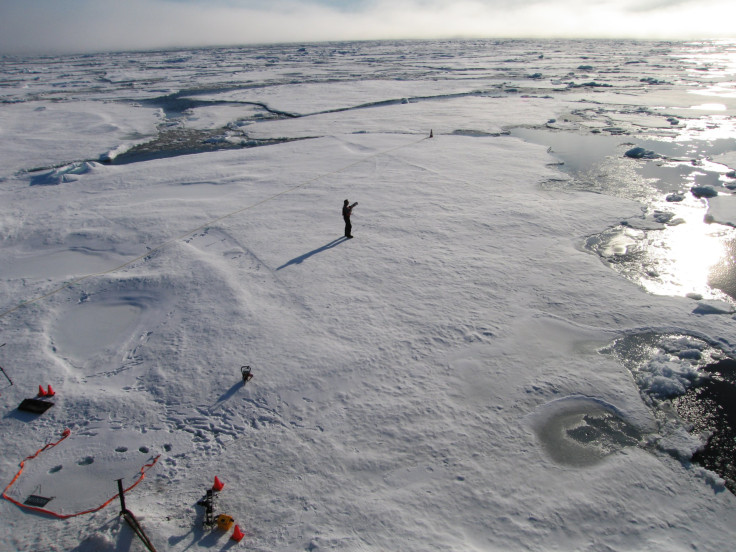Greenland Ice Melt: Island’s Vanishing Lakes Making Massive Ice Sheet Less Stable, Study Finds

Subglacial lakes have formed underneath the Greenland ice sheet that could make the ice more sensitive to climate change than previously thought, according to a team of U.S. scientists whose study appeared Wednesday in the journal Nature. While this isn’t the first time liquid water has been discovered trapped beneath Greenland’s ice, researchers said the findings add to climatologists’ understanding of global warming’s effects on the ice sheet’s basal ice layer, which sits atop the island’s bedrock. Meltwater from Greenland is one of the biggest contributors to a global sea level rise, which threatens coastal cities around the world.
The meltwater, the results of rising global temperatures, essentially lubricates the basal layer and makes it more likely to slide out to sea, researchers said. Between 2012 and 2014, scientists witnessed summer meltwater that had pooled on the glacier’s surface suddenly drain, presumably seeping under the ice sheet and transferring heat to the basal layer. “If enough water is pouring down into the Greenland Ice Sheet for us to see the same subglacial lake empty and refill itself over and over, then there must be so much latent heat being released under the ice that we'd have to expect it to change the large-scale behavior of the ice sheet," study co-author Michael Bevis, of the School of Earth Sciences at Ohio State University in Columbus, said in a statement.
Greenland’s ice sheet covers about 80 percent of the island of Greenland and is the second largest ice sheet in the world after Antarctica. It measures roughly 2,540 kilometers (1,580 miles) from north to south and 1,094 kilometers wide. The volume of ice on Greenland is estimated at about 2.8 million cubic kilometers. In some spots, the ice is nearly 3 kilometers thick.
As global temperatures have risen over the past century -- last year being the warmest year on record, according to new data from NASA’s Goddard Institute for Space Studies -- large chunks of Greenland’s ice have melted, dumping billions of tons of water into the ocean annually. Previous research has shown that between 2003 and 2012, the northeast region of Greenland’s ice sheet receded nearly 20 kilometers. Scientists have said of all the ice masses on earth, Greenland has contributed the most to global sea level rise, which is now at about 0.13 inches a year.
Even more concerning was that scientists in March discovered that Greenland’s ice sheet is melting faster than was believed, adding an estimated 10 billion tons of water into the surrounding ocean every year since 2003. Much of that runoff was the result of a failed barrier of ice that had been holding the water back.
In December 2013, scientists used ground-penetrating radar to estimate the size of a massive reservoir of meltwater underneath Greenland. They found that it spanned roughly 70,000 square kilometers -- roughly the size of Ireland. Scientists described the water as being trapped “like the juice in a snow cone."
The number of lakes dotting Greenland’s surface has increased over the past few years, and the pools of meltwater are appearing at higher altitudes than before. Researchers said that as more of that water drains into the subsurface and accumulates underneath the ice sheet, the heat it releases can soften the surrounding ice, “which may eventually cause an increase in ice flow,” Michael Willis, lead author of the new study and a researcher with Cornell University’s Earth and Atmospheric Sciences department, said in a statement. "Each summer scientists see bright blue streams form on the surface of Greenland as warm air melts the ice sheet. What happens to this water when it disappears into cracks in the ice has remained a mystery."
© Copyright IBTimes 2024. All rights reserved.












